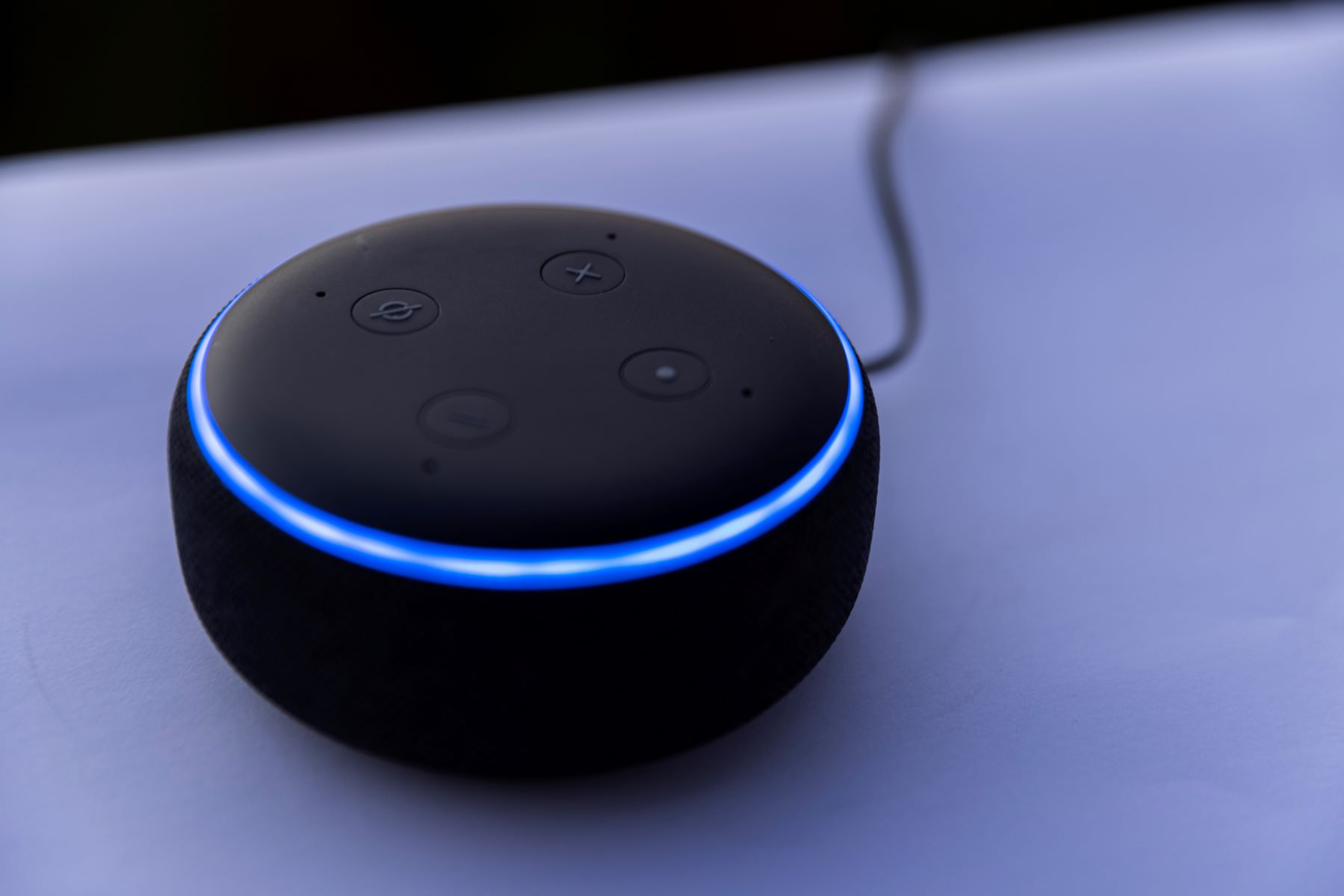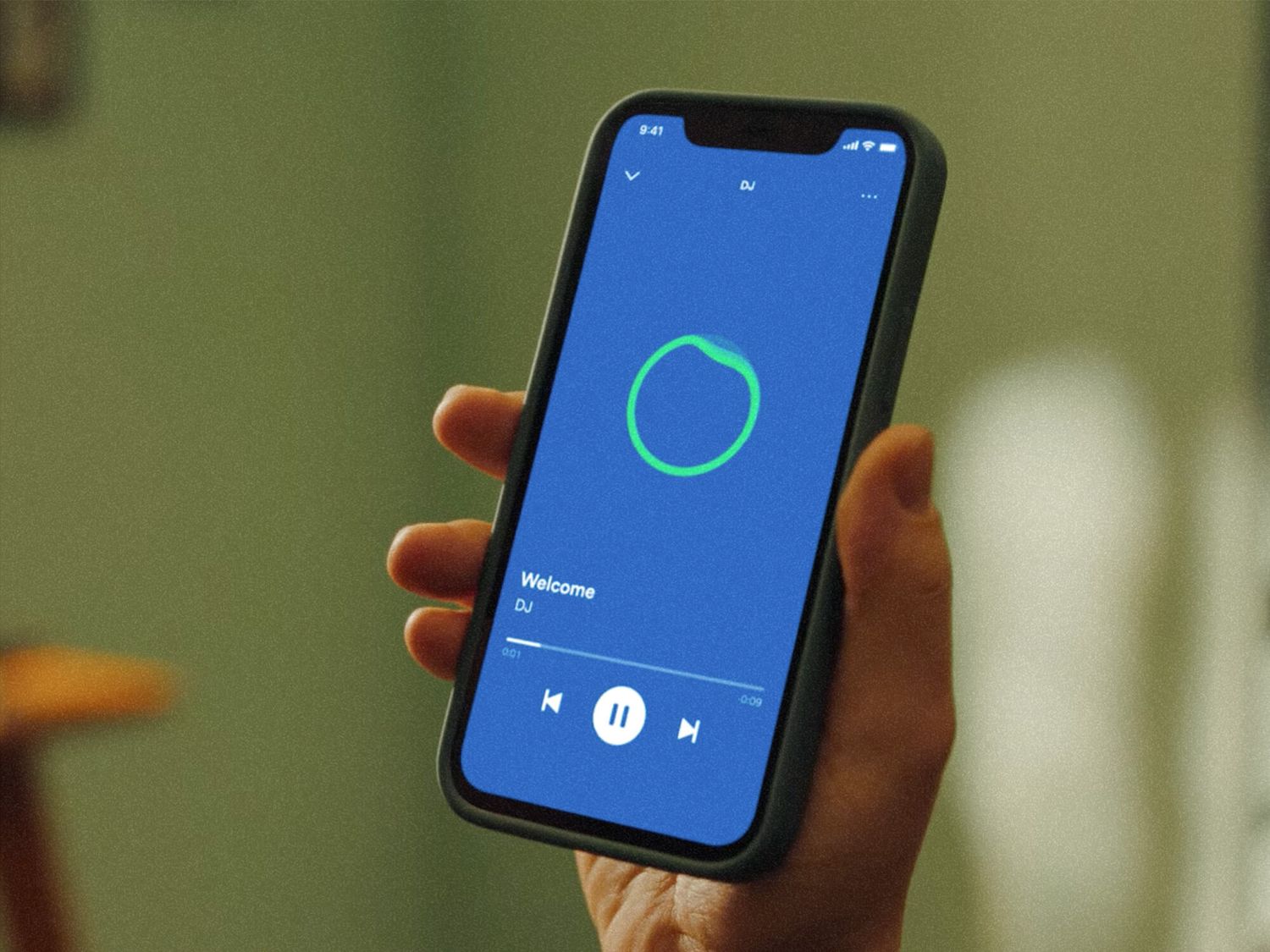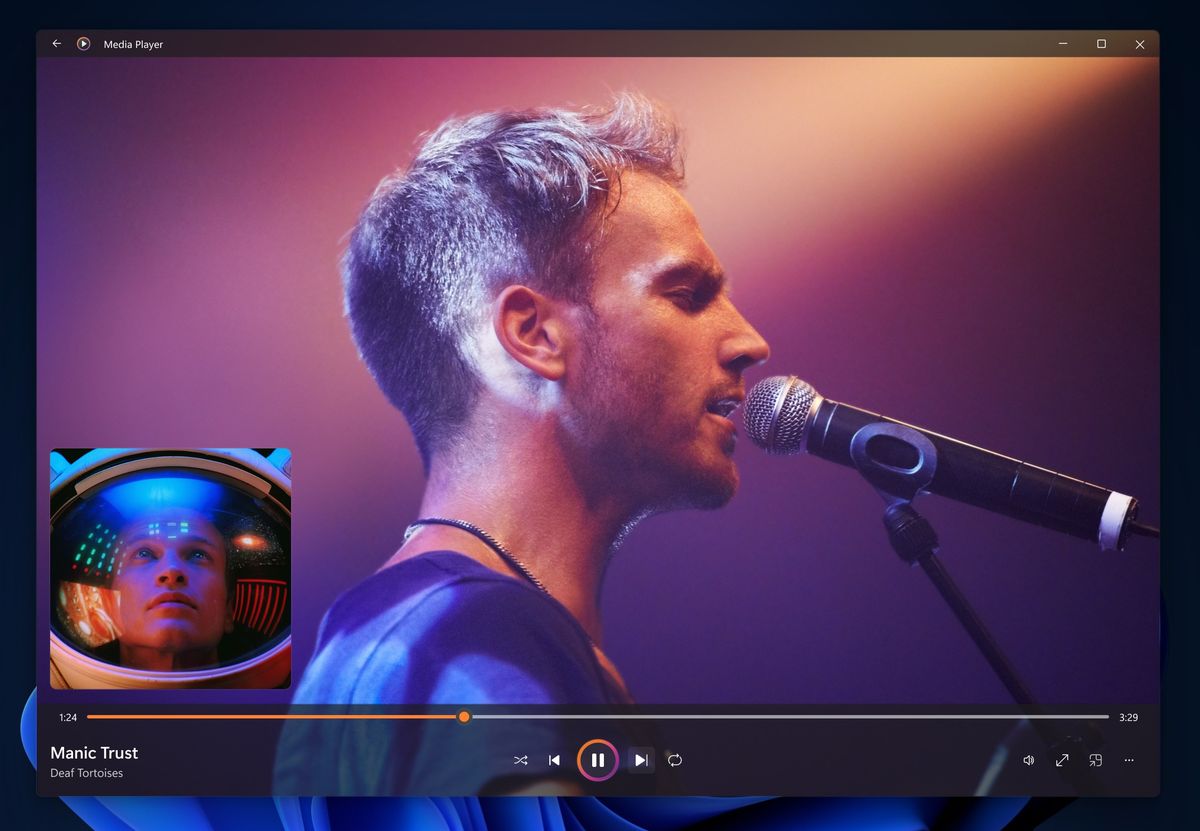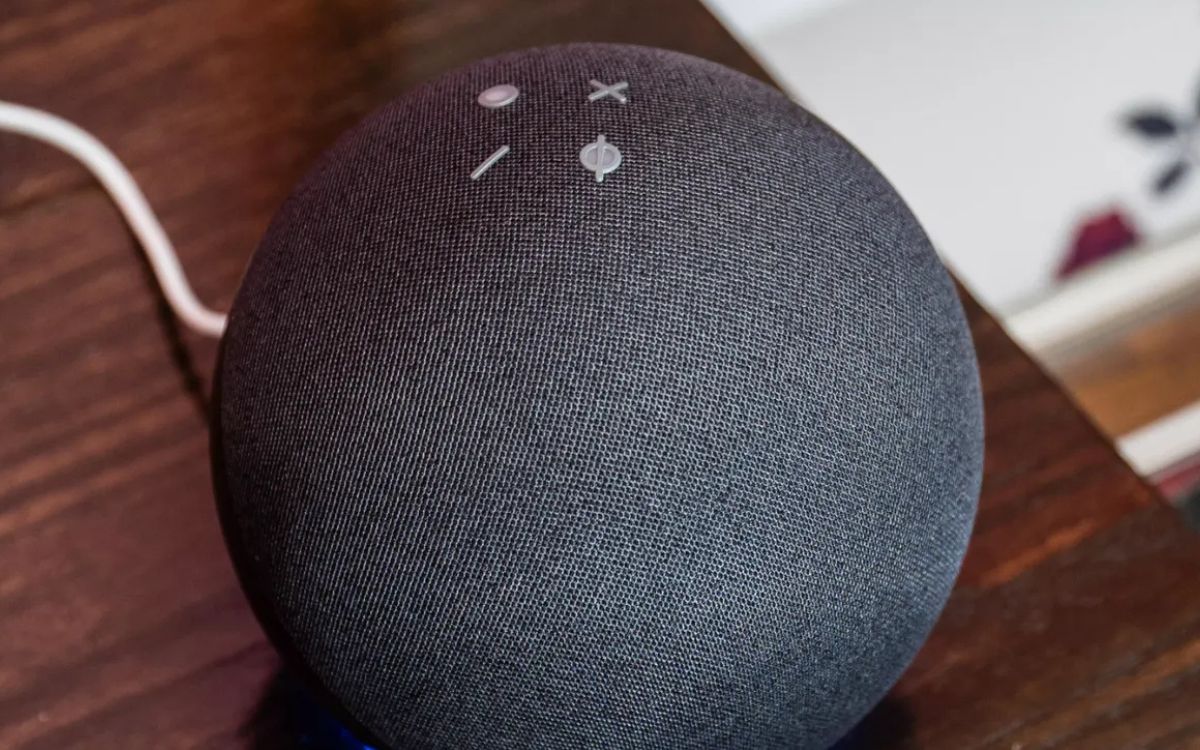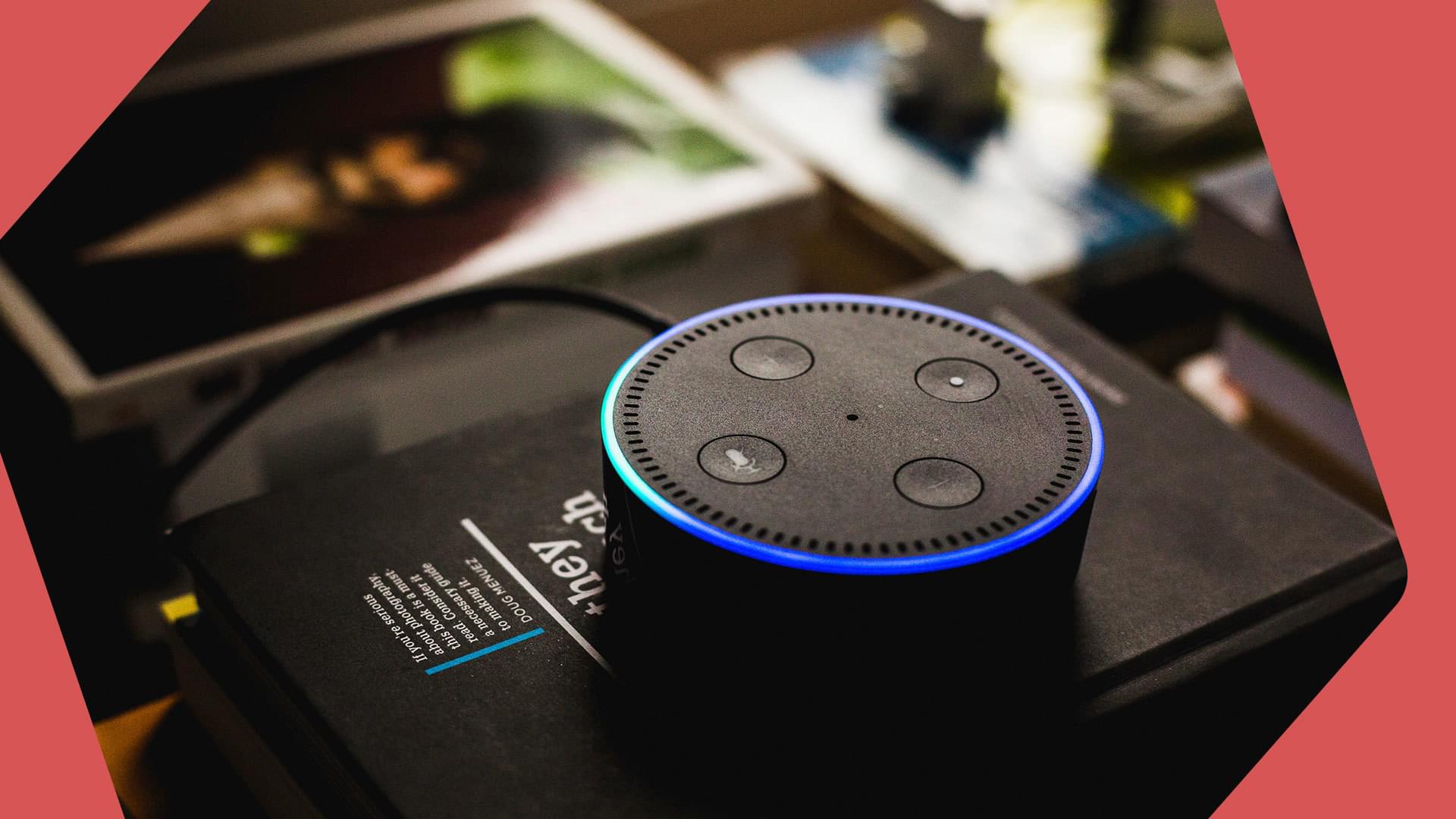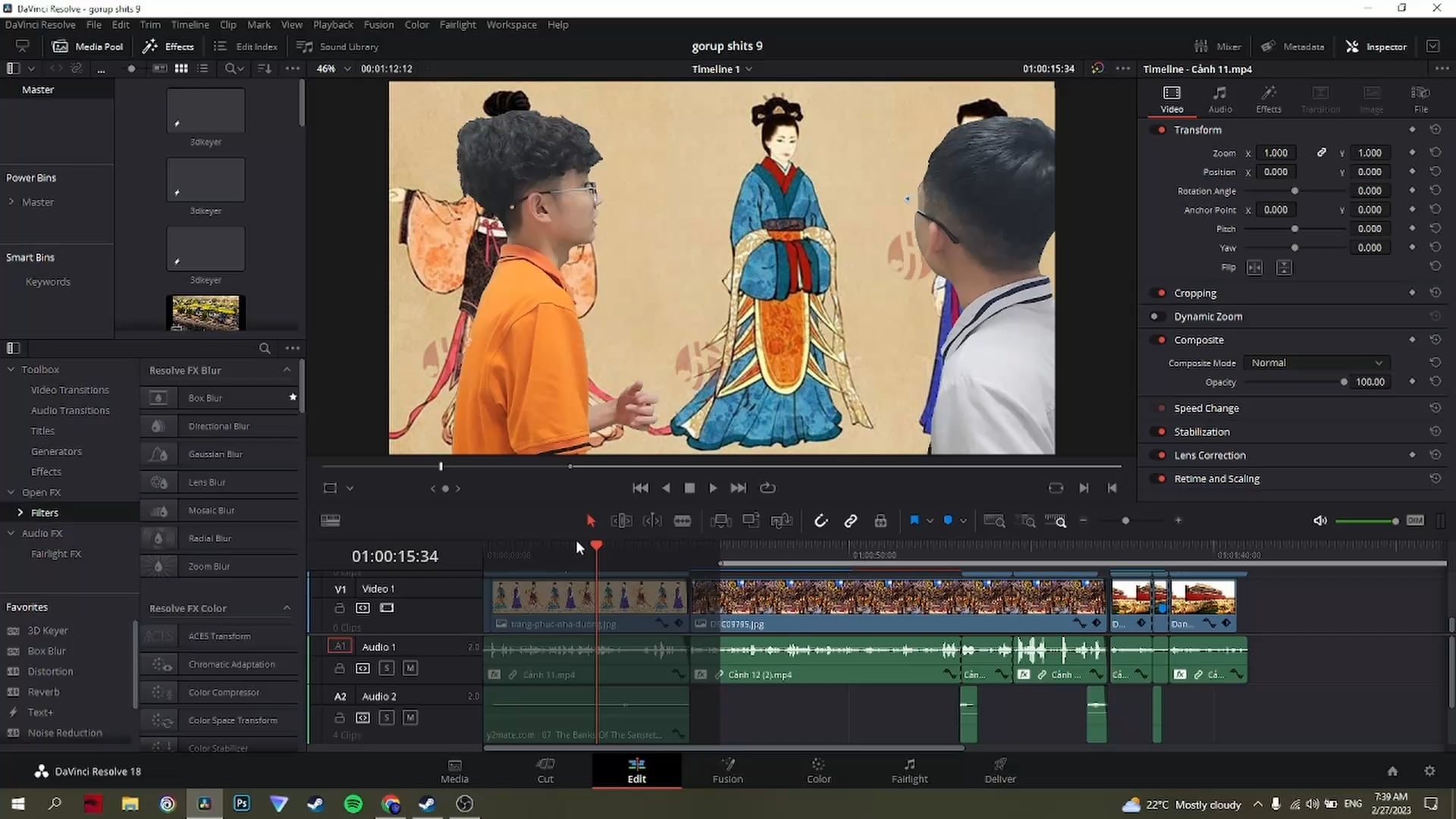Home>Events & Info>Playback>Why Is Playback Restricted On Spotify For Alexa
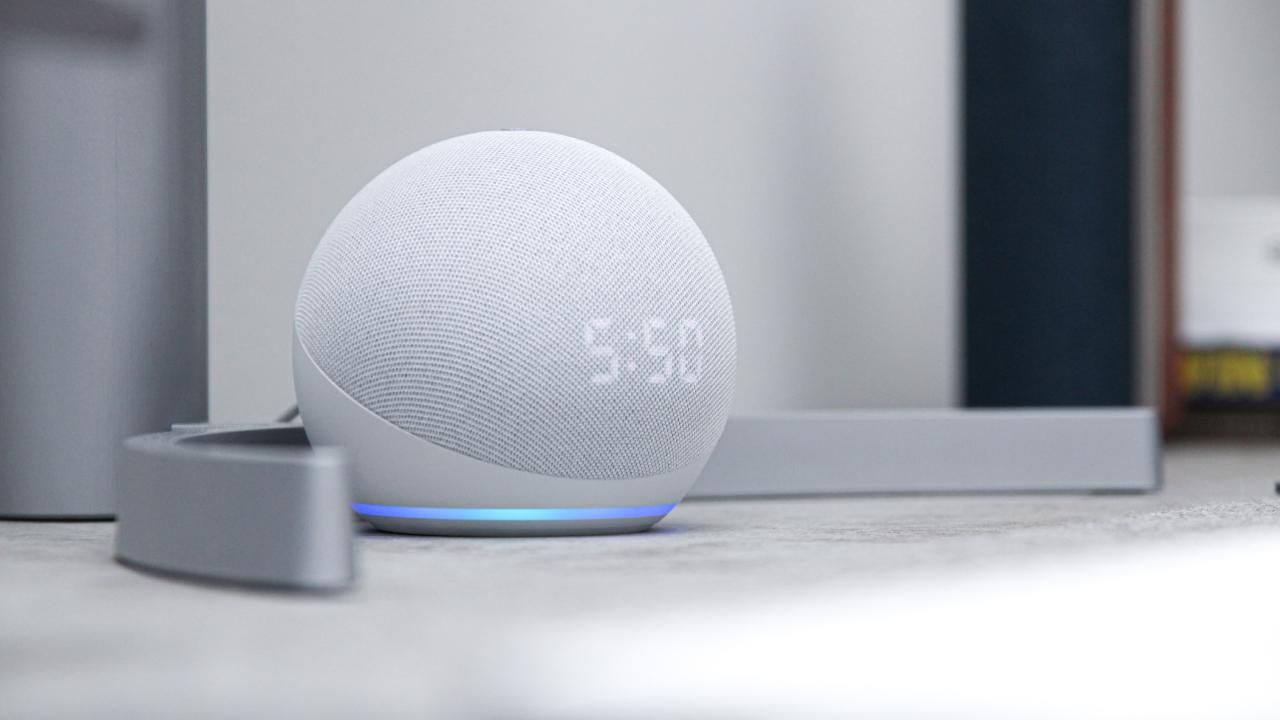

Playback
Why Is Playback Restricted On Spotify For Alexa
Modified: March 8, 2024
Discover why playback is restricted on Spotify for Alexa and learn how to overcome this limitation to enjoy uninterrupted music streaming.
(Many of the links in this article redirect to a specific reviewed product. Your purchase of these products through affiliate links helps to generate commission for AudioLover.com, at no extra cost. Learn more)
Table of Contents
- Introduction
- How Does Spotify Work with Alexa?
- What Is Playback Restriction on Spotify for Alexa?
- Reasons for Playback Restrictions on Spotify for Alexa
- Copyright and Licensing Issues
- Limitations Due to Spotify’s Free Version
- Limitations Due to Spotify Family Plan
- How to Bypass Playback Restrictions on Spotify for Alexa
- Using Spotify Connect with Alexa
- Conclusion
Introduction
In recent years, the popularity of voice-controlled smart speakers has skyrocketed, with devices like Amazon Echo and Google Home becoming commonplace in households. These smart speakers often come equipped with virtual assistants like Amazon’s Alexa, which can perform a wide range of tasks, including playing music from various streaming services.
One popular streaming service that users often want to integrate with their smart speakers is Spotify. Spotify offers an extensive library of music, podcasts, and playlists that users can access on various devices. However, when it comes to Spotify and Alexa integration, there are certain limitations imposed on the playback functionality.
Playback restrictions on Spotify for Alexa can be frustrating for users who want to enjoy their favorite songs or playlists seamlessly through their smart speakers. In this article, we’ll explore the reasons behind these playback restrictions and discuss possible ways to bypass them.
How Does Spotify Work with Alexa?
Before delving into the restrictions, it’s important to understand how Spotify works with Alexa. Alexa allows users to link their Spotify accounts to their smart speakers, enabling them to control their Spotify playback through voice commands. This integration allows users to play, pause, skip, and adjust the volume of their Spotify music using voice prompts.
What Is Playback Restriction on Spotify for Alexa?
Playback restriction on Spotify for Alexa refers to the limitations in functionality when using Spotify through Alexa-enabled devices. These restrictions can vary depending on different factors such as the user’s Spotify subscription type or any licensing agreements between Spotify and music publishers.
How Does Spotify Work with Alexa?
Spotify integration with Alexa allows users to seamlessly control their Spotify playback using voice commands through their smart speakers. By linking their Spotify accounts to their Alexa-enabled devices, users can access and play their favorite songs, playlists, and podcasts without picking up their phone or manually navigating through the Spotify app.
When you link your Spotify account to Alexa, you gain the ability to control the music playback using voice prompts. You can ask Alexa to play a specific song, artist, genre, or playlist. For example, you can say “Alexa, play ‘Hotel California’ by The Eagles” or “Alexa, play my ‘Chill Vibes’ playlist”. Alexa will then communicate with the Spotify servers and start playing the requested content.
Along with basic playback controls like play, pause, skip, and volume adjustments, you can also ask Alexa to explore specific genres or discover new music. For instance, you can say “Alexa, play some top hits from the 80s” or “Alexa, suggest some new indie rock bands”. Alexa will use your Spotify preferences and algorithms to provide personalized recommendations.
In addition to controlling the playback, Spotify for Alexa also supports advanced features like Spotify Connect. Spotify Connect allows you to seamlessly transfer the playback from one device to another. For example, if you’re listening to a song on your smartphone and want to continue playing it on your Alexa-enabled device, you can simply say “Alexa, play Spotify on Living Room Speaker” and the music will continue playing on the designated device.
Overall, the integration between Spotify and Alexa provides users with a convenient and hands-free way to enjoy their favorite music, playlists, and podcasts using only their voice.
What Is Playback Restriction on Spotify for Alexa?
Playback restrictions on Spotify for Alexa refer to the limitations placed on the functionality of Spotify when used with Alexa-enabled devices. These restrictions can vary depending on factors such as the user’s Spotify subscription type or any licensing agreements between Spotify and music publishers.
One common playback restriction is the inability to play specific songs or albums on-demand. With Spotify Free, the ad-supported version of Spotify, users can only play music on shuffle mode. This means that when using Spotify Free with Alexa, you can request an artist, playlist, or genre, but the specific songs that play will be randomized. To have more control over the playback, a Spotify Premium subscription is required.
Another restriction is related to certain regional licensing agreements. Spotify’s music catalog can vary depending on the country you’re in due to licensing restrictions. Therefore, some songs or albums that are available in the Spotify app may not be playable through Alexa in certain regions. This can be frustrating for users who want to enjoy their favorite tracks that might not be supported in their current location.
Moreover, some features or playlists exclusive to the Spotify app may not be accessible through Alexa integration. This includes personalized playlists like Discover Weekly or Release Radar, as well as Spotify’s podcasts and audiobooks. The focus of Spotify integration with Alexa is mainly on music playback, so some specialized features and content may not be available.
It’s important to note that these playback restrictions are not unique to Spotify and apply to other music streaming services as well. The limitations are in place to ensure compliance with licensing agreements, protect copyrighted content, and maintain a fair distribution of revenue between artists, publishers, and streaming platforms.
Despite these restrictions, Spotify integration with Alexa still provides a convenient way to enjoy a wide range of music through voice commands. While the specific songs played might be limited or shuffled, users can still access and enjoy their favorite artists, genres, and playlists effortlessly.
Reasons for Playback Restrictions on Spotify for Alexa
There are several reasons behind the playback restrictions on Spotify for Alexa. These restrictions are in place to ensure compliance with licensing agreements, protect copyrighted content, and maintain a fair distribution of revenue between artists, publishers, and streaming platforms. Let’s explore some of the main reasons for these playback restrictions:
1. Copyright and Licensing Issues: Music is subject to copyright laws, which means that streaming platforms like Spotify need to obtain licenses from music publishers and copyright holders to legally distribute the content. These licensing agreements often come with specific terms and limitations, which can impact the availability and playback options of certain songs or albums on platforms like Alexa. Playback restrictions help ensure that music is being streamed in accordance with these licensing agreements.
2. Limitations Due to Spotify’s Free Version: Spotify offers a free ad-supported version, which allows users to access its music library for free. However, to provide this service at no cost, Spotify imposes certain limitations, such as shuffle-only playback. When using Spotify Free with Alexa, users have limited control over the specific songs that play, as the songs are randomized in shuffle mode. To unlock additional features and on-demand playback, users need to subscribe to Spotify Premium.
3. Limitations Due to Spotify Family Plan: Spotify’s Family Plan allows multiple users in a household to share a single subscription at a discounted price. However, this plan also imposes certain limitations on playback when using Spotify with Alexa. Only the main account holder, also known as the Family Plan manager, can link their Spotify account and control playback through Alexa. Other family members can use Alexa to control playback, but they must use the main account holder’s linked Spotify account.
4. Regional Licensing Agreements: Music licensing agreements can vary by country or region, resulting in the availability of different songs or albums depending on the user’s location. Some songs or artists may not be licensed for streaming in certain regions, leading to playback restrictions when using Spotify with Alexa in those areas. This ensures compliance with regional licensing agreements and avoids any potential legal issues.
5. Focus on Core Playback Features: Spotify integration with Alexa primarily focuses on core playback features, such as playing songs, playlists, and genres through voice commands. Specialized features or content exclusive to the Spotify app, such as Discover Weekly playlists, podcasts, or audiobooks, may not be fully accessible through Alexa integration. This helps streamline the user experience and ensures that the primary playback functionality remains intact.
While these playback restrictions can be limiting for some users, they are necessary to maintain legal compliance and ensure a fair ecosystem for artists, publishers, and streaming platforms.
Copyright and Licensing Issues
One of the main reasons for playback restrictions on Spotify for Alexa is the complex landscape of copyright and licensing in the music industry. Copyright laws exist to protect the rights of creators and ensure fair compensation for their work. When it comes to streaming music, platforms like Spotify must secure licenses from music publishers and copyright holders to legally distribute the content to their users.
These licensing agreements come with specific terms and restrictions that dictate how the music can be accessed, played, and distributed. The purpose of these restrictions is to safeguard the rights of the copyright holders and ensure that they receive fair compensation for their creative works.
For example, licensing agreements may specify limitations on the number of times a song can be played within a certain time frame or restrict the availability of certain songs or albums in specific countries or regions. These restrictions are in place to maintain control over the distribution of the music and protect the interests of the artists and copyright holders.
When Spotify integrates with platforms like Alexa, these licensing agreements still apply. As a result, playback restrictions are implemented to ensure that the streaming of music through Alexa remains compliant with the terms of the licensing agreements. These restrictions can impact the availability, on-demand playback, and control over specific songs, albums, or artists when using Spotify with Alexa.
Playback restrictions also play a role in managing revenue distribution. Streaming platforms like Spotify have agreements in place to distribute royalties to artists and copyright holders based on the number of streams or plays their music receives. By implementing playback restrictions, platforms can better manage and track the distribution of royalty payments, ensuring that the appropriate parties are compensated for the utilization of their creative works.
While playback restrictions can sometimes be frustrating for users, it’s important to remember that they are in place to maintain a fair and sustainable ecosystem for the music industry. By respecting copyright laws and licensing agreements, streaming platforms like Spotify can continue to provide access to a vast library of music while ensuring that artists and copyright holders are appropriately compensated for their contributions.
Limitations Due to Spotify’s Free Version
Spotify offers two main subscription options: Free and Premium. While the Free version of Spotify provides users with access to a vast music library, it does come with certain limitations. These limitations can affect the playback experience when using Spotify with Alexa.
One of the primary limitations of the Free version is the shuffle-only playback. When using Spotify Free with Alexa, users can play music, but they cannot choose specific songs or albums directly. Instead, the playback is limited to shuffle mode, where the songs are randomly selected from the playlist, album, or artist’s discography.
This means that if you have a specific song in mind that you want to hear, you cannot request it directly when using Spotify Free with Alexa. Instead, you would have to rely on luck or skip through songs until your desired track plays in the shuffle lineup.
Spotify implemented this limitation to encourage users to upgrade to the Premium subscription, as it offers a more personalized and on-demand listening experience. With Spotify Premium, users have full control over their music playback, allowing them to select specific songs, create playlists, and enjoy an ad-free experience.
When it comes to using Spotify with Alexa, upgrading to Spotify Premium can unlock additional features and functionalities. Subscribers to the Premium plan can request specific songs, artists, playlists, or genres and enjoy a seamless listening experience without interruptions from ads. The on-demand playback feature allows users to choose and play any song they want, giving them greater control over their music experience.
By implementing this limitation for Spotify Free users, Spotify aims to entice users to upgrade to the Premium subscription, which grants them more control, convenience, and a better overall listening experience. While the limitations of the Free version can be frustrating for some users, they serve as an incentive to access the full potential of Spotify’s features and functionalities.
If you enjoy using Spotify with Alexa and want to have complete control over your music playback, upgrading to Spotify Premium is a worthwhile investment. Not only does it remove the shuffle-only limitation, but it also provides users with a range of added benefits and features that enhance the overall music listening experience.
Limitations Due to Spotify Family Plan
The Spotify Family Plan is a popular subscription option that allows multiple users within a household to share a single Spotify Premium subscription at a discounted price. While this plan offers cost savings and convenience, it does come with certain limitations that may affect the playback experience when using Spotify with Alexa.
One of the primary limitations of the Spotify Family Plan when it comes to using Spotify with Alexa is the requirement for a designated Family Plan manager. The Family Plan manager is the main account holder who sets up and manages the subscription. Only the Family Plan manager can link their Spotify account to Alexa and have full control over the playback through voice commands.
Other members of the Spotify Family Plan can use Alexa to control playback; however, they must do so using the Spotify account linked by the Family Plan manager. This means that they cannot link and use their individual Spotify accounts when interacting with Spotify through Alexa. While this limitation ensures that the main account holder retains control over the subscription and playback, it may be less convenient for other family members who prefer to use their own personalized Spotify accounts.
Additionally, limitations may arise when it comes to personalizing the music experience for each family member. Spotify offers personalized features like Discover Weekly playlists, Release Radar, and Daily Mixes, which are tailored to individual listening preferences. However, with the Spotify Family Plan, these personalized features are only available for the main account holder. Other family members using the shared subscription may not have access to these personalized recommendations, as they are tied to the Spotify account of the Family Plan manager.
Despite these limitations, the Spotify Family Plan still provides a cost-effective way for multiple users within a household to enjoy the benefits of a Spotify Premium subscription. While the playback through Alexa may be tied to a single account and lack individual personalization, it still allows all family members to listen to their favorite artists, playlists, and genres hands-free through their Alexa-enabled devices.
If personalization and individual playback control are a priority, it may be worth considering separate Spotify Premium subscriptions for each family member, rather than utilizing the Family Plan. This would allow each member to have complete control over their Spotify account and tailor their music experience based on their unique preferences.
Overall, the limitations arising from the Spotify Family Plan with regards to Alexa integration exist to manage access and control in a shared subscription setting, but they still enable a convenient and enjoyable music playback experience for the entire family.
How to Bypass Playback Restrictions on Spotify for Alexa
While Spotify playback restrictions on Alexa may be limiting, there are a few methods you can try to bypass some of these limitations. Here are some approaches to consider:
1. Using Spotify Connect with Alexa: One way to bypass the playback restrictions is by utilizing Spotify Connect. With Spotify Connect, you can control the playback on your Alexa device directly from the Spotify app on your smartphone or computer. Simply open the Spotify app, select the song or playlist you want to play, and then choose the option to play it on your Alexa device through Spotify Connect.
2. Upgrading to Spotify Premium: Upgrading to a Spotify Premium subscription not only removes the shuffle-only limitation but also provides additional features and functionality. With Spotify Premium, you can enjoy on-demand playback, ad-free listening, and the ability to skip tracks freely. Once you have upgraded to Premium, link your Spotify account to Alexa, and you will have more control over the songs and albums you play through voice commands.
3. Exploring Spotify Skills for Alexa: Check if there are any third-party Alexa skills developed specifically for Spotify. These skills may offer additional features and bypass certain restrictions imposed by the official Spotify integration. Explore the Alexa Skills Store to see if there are any skills that enhance your Spotify playback experience.
4. Utilizing Spotify Playlists: While specific song requests may be limited on Alexa with Spotify Free, you can create playlists in advance on your Spotify account and name them according to your preferences. For example, you can create a playlist called “Favorites” or “Alexa Music” and add your desired songs to it. Then, when using Spotify with Alexa, you can ask Alexa to play that playlist by name, granting you more control over the songs that are played.
5. Exploring Other Music Streaming Services: If the playback restrictions on Spotify for Alexa are too limiting for your liking, consider exploring other compatible music streaming services. Alexa supports various music streaming services like Amazon Music, Apple Music, and Pandora. Each service may have its own unique features and integrations that offer a different playback experience compared to Spotify.
It’s important to note that while these methods may help bypass certain restrictions, they may not fully overcome all playback limitations on Spotify for Alexa. The level of control and functionality you have will ultimately depend on factors such as your Spotify subscription type and any licensing agreements in place.
Before attempting to bypass these restrictions, it’s also essential to review the terms and conditions of Spotify and Alexa to ensure that you are using the services in compliance with their guidelines and policies.
By exploring these alternative methods, you may find a workaround or solution that better meets your needs and allows you to enjoy a more personalized and seamless playback experience with Spotify and Alexa.
Using Spotify Connect with Alexa
One effective method to bypass playback restrictions on Spotify for Alexa is by utilizing Spotify Connect. Spotify Connect allows you to control the playback on your Alexa device directly from the Spotify app on your smartphone, tablet, or computer. This feature provides a seamless and convenient way to have more control over your music streaming experience. Here’s how you can use Spotify Connect with Alexa:
1. Ensure device compatibility: Verify that both your Alexa-enabled device and the device running the Spotify app are connected to the same Wi-Fi network. This ensures that they can communicate with each other through Spotify Connect.
2. Open the Spotify app: Launch the Spotify app on your smartphone, tablet, or computer. Make sure you have the latest version of the app installed to access all the features.
3. Play your desired content on Spotify: Browse through the Spotify app and choose the song, artist, album, or playlist you want to play through your Alexa device. You have complete control over selecting any content available on Spotify, including personalized playlists like Discover Weekly or Release Radar.
4. Tap on the “Devices Available” icon: Look for the “Devices Available” icon, which is usually represented by a speaker-shaped icon with sound waves. Tap on it to see a list of available devices that support Spotify Connect.
5. Select your Alexa device: From the list of available devices, choose your Alexa-enabled device on which you want to stream the content. It should be listed by its given name or labeled as an Alexa device. Selecting the device will initiate the playback on your chosen Alexa device.
6. Control playback: Once the content starts playing on your Alexa device, you can use the Spotify app’s playback controls — play, pause, skip, and adjust the volume — to control the playback remotely. You can also use the controls on your Alexa device or give voice commands to Alexa to control playback, such as “Alexa, pause” or “Alexa, skip to the next song.”
Using Spotify Connect with Alexa provides you with the flexibility to play and control your desired content without the specific limitations that may be imposed when using Spotify purely through Alexa voice commands. It allows you to have a more personalized and direct control over your Spotify playback experience while still enjoying the convenience of using your Alexa-enabled device.
Note that Spotify Connect requires both a Spotify account and a valid Spotify Premium subscription to access all its features. However, even with a free Spotify account, you can still use Spotify Connect to control playback on Alexa devices, although you may have limited control over the specific songs or albums played.
By leveraging Spotify Connect, you can have a richer and more interactive music streaming experience with Spotify and Alexa, allowing you to enjoy your favorite tracks and playlists seamlessly across different devices.
Conclusion
Playback restrictions on Spotify for Alexa, while sometimes frustrating, are a result of various factors such as copyright and licensing issues, limitations of the Spotify Free version, and considerations within the Spotify Family Plan. These restrictions aim to ensure legal compliance, protect artists’ rights, and maintain fair revenue distribution. However, there are ways to bypass some of these limitations and enhance your Spotify playback experience on Alexa.
By utilizing Spotify Connect, you can seamlessly control playback on your Alexa device through the Spotify app on your smartphone or computer. This allows for more personalized control over the music you play, leveraging the full functionality of Spotify. Upgrading to a Spotify Premium subscription provides additional benefits, such as on-demand playback and an ad-free experience, which can further enhance your control over Spotify when using Alexa.
While exploring alternative methods or considering other music streaming services compatible with Alexa may offer more options, it’s important to review the terms and conditions of these services to ensure compliance with their guidelines and policies.
In conclusion, while there are certain limitations imposed on Spotify playback for Alexa, there are ways to navigate these restrictions and have a more tailored music experience. By understanding the reasons behind the limitations and exploring alternative techniques, you can make the most out of Spotify on your Alexa-enabled device, enjoying your favorite songs, playlists, and genres with greater control and convenience.
Remember, the ultimate goal is to create a seamless and enjoyable music streaming experience, and by exploring different avenues and staying informed about updates and developments, you can optimize your Spotify playback experience on Alexa to suit your preferences.

